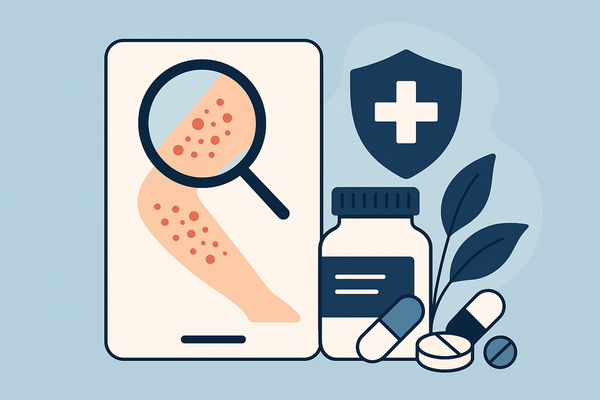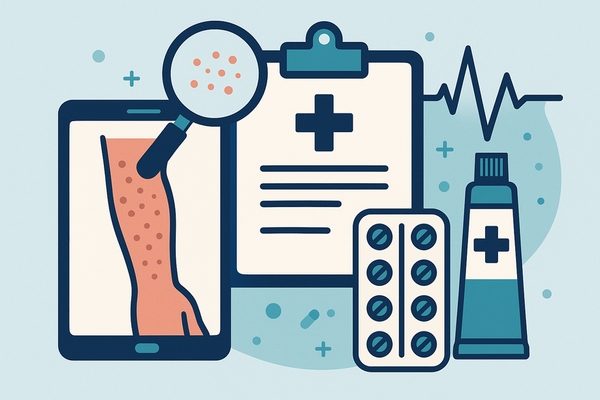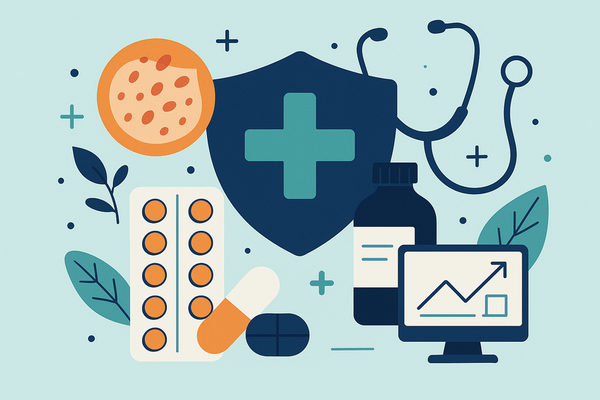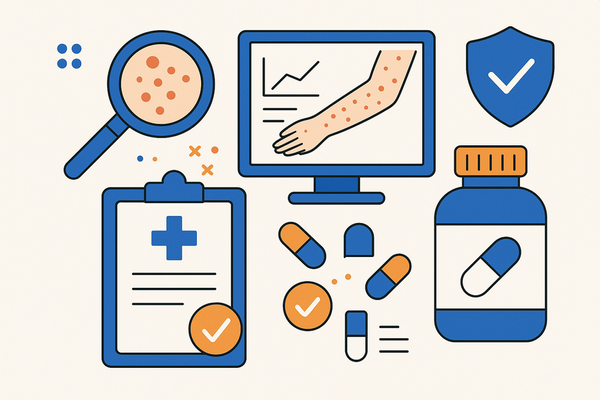Effective Medication Rash Treatment: Identify, Manage, and Prevent Drug-Induced Rashes
Discover effective medication rash treatment strategies to identify, manage, and prevent drug-induced rashes with expert guidance. Protect your skin health.
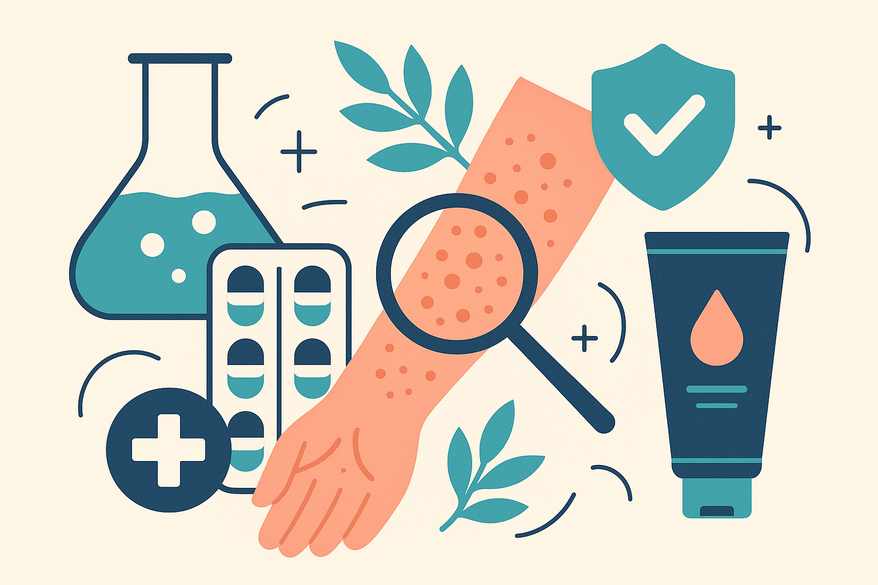
Estimated reading time: 6 minutes
Key Takeaways
- Early recognition of medication-induced rashes prevents complications.
- Typical culprits: antibiotics, anti-seizure drugs, NSAIDs, chemotherapy.
- Mild vs. severe: distinguish to determine urgent care needs.
- First-line treatments: OTC antihistamines, topical corticosteroids, cool compresses.
- Prevention: maintain thorough allergy records and communicate with providers.
Table of Contents
- I. Understanding Medication-Induced Rashes
- II. Recognising the Symptoms
- III. Steps for Managing and Treating Medication Rashes
- IV. Prevention & Future Considerations
- V. Conclusion
I. Understanding Medication-Induced Rashes
1. Definition & Underlying Mechanisms
Medication-induced rashes are skin reactions provoked by a drug or its metabolites. They often arise from:
- Immune-mediated reactions: histamine release and allergic inflammation.
- Direct toxicity: irritation of skin cells causing dermatitis or contact reactions.
- Delayed hypersensitivity: T-cell activation prompting red, itchy patches days after exposure.
These mechanisms can overlap—for instance, antibiotic-induced hives may involve both histamine release and immune complexes. Understanding the cause guides treatment choices like antihistamines for histamine-driven rashes or corticosteroids for inflammatory lesions.
2. Typical Culprit Medications
- Antibiotics: penicillin, sulfa drugs.
- Anti-seizure agents: carbamazepine, phenytoin.
- NSAIDs: ibuprofen, naproxen.
- Chemotherapy drugs: methotrexate, doxorubicin.
Real-world note: Penicillin allergies are most common, often causing itchy hives within hours of the first dose.
3. Contributing Risk Factors
- Personal or family history of drug allergies.
- Polypharmacy and potential drug interactions.
- Underlying autoimmune conditions (e.g., lupus).
- Genetic predispositions (e.g., HLA-B*1502 variant).
Documenting these factors helps predict susceptibility and tailor prescription choices.
4. Differentiating Mild vs. Severe Reactions
Mild Reactions
- Localized redness or small hives.
- Mild itching without systemic symptoms.
Severe Reactions
- Widespread blistering or skin peeling.
- Swelling of face, lips, or tongue; breathing difficulty.
- Systemic signs: fever, joint pain, organ involvement (Stevens–Johnson syndrome).
Severe reactions require immediate medical attention and often hospitalization.
II. Recognising the Symptoms
1. Common Presentation
- Red patches or generalized erythema.
- Itching (pruritus) and burning sensations.
- Raised bumps (urticaria) or blisters (vesicles).
- Peeling or flaking skin; soreness in sensitive areas.
Early identification—using a mirror or asking a loved one for help—prevents progression and complications.
2. Warning Signs for Urgent Care
Seek emergency care if you experience:
- Difficulty breathing, wheezing, throat tightness.
- Rapidly spreading blisters or raw, denuded skin.
- High fever (>101°F), chills, lightheadedness.
These may indicate anaphylaxis or a severe cutaneous adverse reaction (SCAR).
3. Monitoring & Documentation Tips
Keep a symptom diary with:
- Date/time of each dose.
- Onset and progression of rash (photograph daily under consistent lighting).
- Associated symptoms: fever, respiratory issues, joint pain.
- Remedies tried and their effects.
Share your records with providers. For help organizing images, see how to track rash progress pictures.
III. Steps for Managing and Treating Medication Rashes
1. Immediate Actions
- Do not stop essential medications abruptly—consult your provider.
- Discontinue suspected drugs under medical advice.
- Remove topical irritants (fragranced lotions, harsh soaps).
Pro tip: Check product labels for fragrances and preservatives that may worsen inflammation.
2. Over-the-Counter Remedies & Home Care
- Oral antihistamines (e.g., diphenhydramine) to relieve itching.
- Topical 1% hydrocortisone cream for mild inflammation.
- Cool compresses (15–20 minutes, up to three times daily).
- Fragrance-free moisturizers with ceramides to restore the skin barrier.
Apply moisturizers immediately after compresses to lock in hydration. Learn more in our guide on best anti-itch cream solutions.
3. When to Seek Medical Attention
- Anaphylaxis signs: use epinephrine and call 911.
- Rash worsens or persists beyond 48–72 hours of OTC care.
- New systemic symptoms: fever, joint pain, malaise.
- Referral to dermatology for biopsy or specialized care.
4. Role of Healthcare Professionals
- Prescription-strength corticosteroids (e.g., prednisone taper).
- Long-acting antihistamines (cetirizine, fexofenadine).
- Alternative medications to avoid cross-reactivity.
- Specialized care (SJS or TEN) with burn-unit protocols.
Dermatologists may use skin testing or patch tests to confirm specific drug allergies for safe future prescribing.
IV. Prevention & Future Considerations
1. Allergy History & Communication
- Always inform providers and pharmacists about drug reactions.
- Carry a written allergy card or wear a medical alert bracelet.
Real-life example: A medical alert bracelet once prevented a penicillin administration in an emergency.
2. Patch Testing & Allergy Workup
- Consult an allergist for skin patch or scratch tests.
- Genetic screening (e.g., HLA-B*1502) to assess risk.
3. Detailed Record-Keeping
- Maintain a medication journal: drug name, dosage, dates.
- Note rash details: type, location, severity.
- Record treatments and outcomes.
Update your electronic health record and personal notes after each reaction.
4. Proactive Provider Discussions
- Talk about premedication strategies (e.g., steroids, antihistamines).
- Plan alternatives for essential drugs with known rash risk.
Effective planning and communication reduce severe reactions and hospitalizations. For long-term skin health strategies, see 10 expert tips to prevent recurring rashes.
V. Conclusion
Successful medication rash treatment hinges on early recognition, prompt action, and prevention strategies. We’ve covered:
- Mechanisms and common culprits of drug-induced rashes.
- Symptom recognition and urgent care red flags.
- Step-by-step management from OTC to prescription interventions.
- Prevention through documentation, testing, and provider communication.
Remember: never discontinue prescribed medication without medical advice—seek immediate care for severe symptoms, and maintain detailed records to guide your healthcare team.
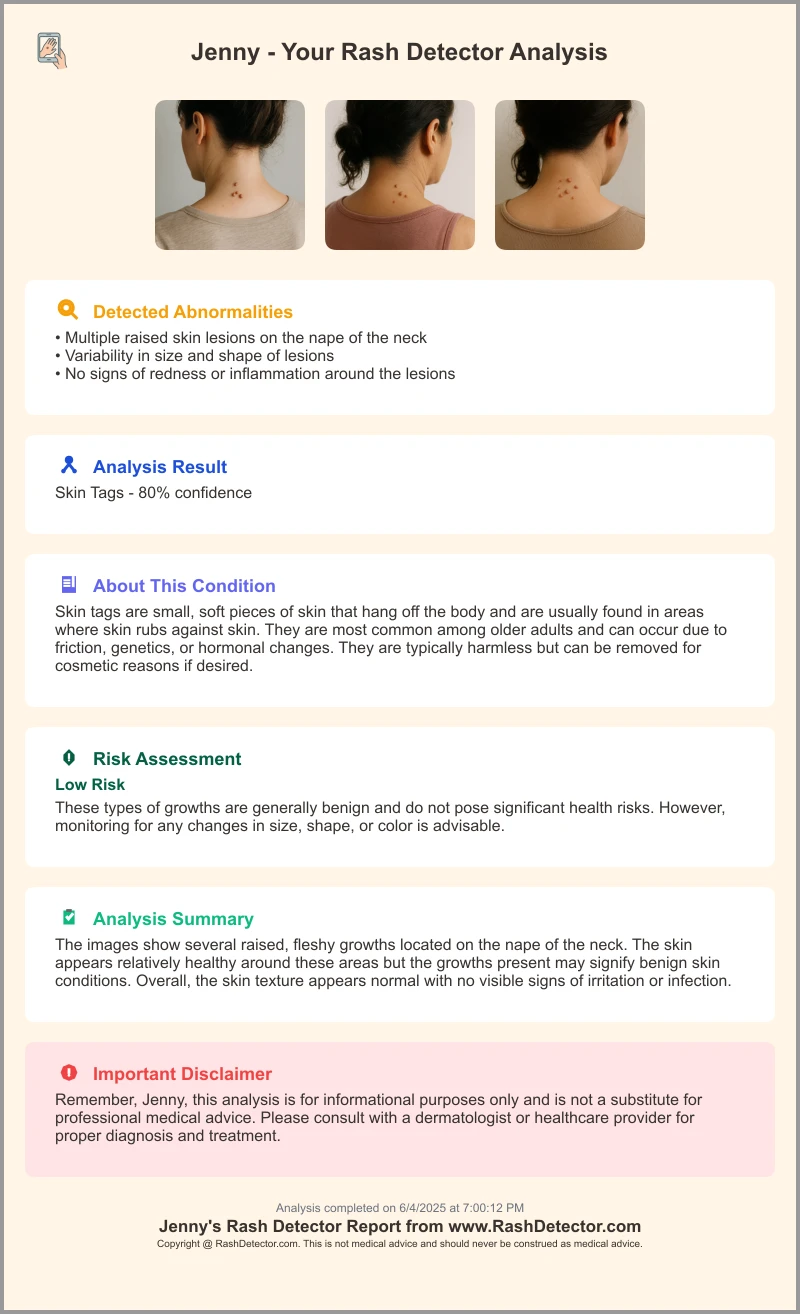
For AI-driven photo-based insights, consider Rash Detector. Knowledge, preparation, and collaboration are your best defense against medication-induced rashes.
FAQ
- What are common symptoms of a drug-induced rash? Redness, itching, hives, blisters, and peeling skin are typical signs. Monitor any unusual skin changes after starting a new medication.
- When should I seek emergency care? If you experience breathing difficulty, widespread blistering, swelling of the face or throat, high fever, or fainting, call 911 immediately.
- How can I treat a mild medication rash at home? Use oral antihistamines, cool compresses, and 1% hydrocortisone cream. Keep the skin moisturized with fragrance-free products.
- How do I prevent future drug rashes? Keep a detailed allergy history, wear a medical alert bracelet, undergo patch or genetic testing, and discuss premedication strategies with your provider.


